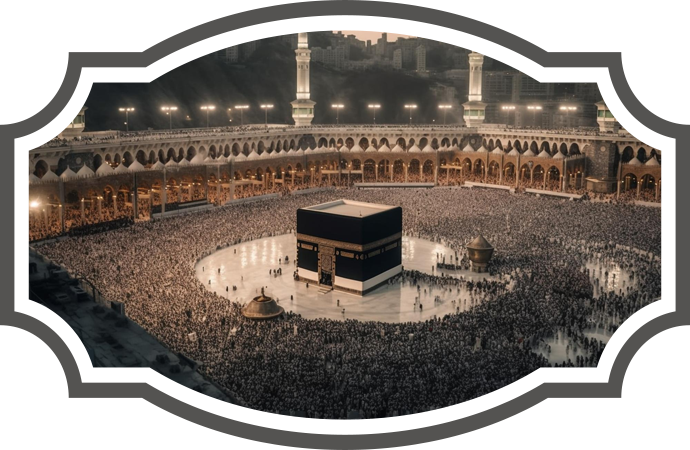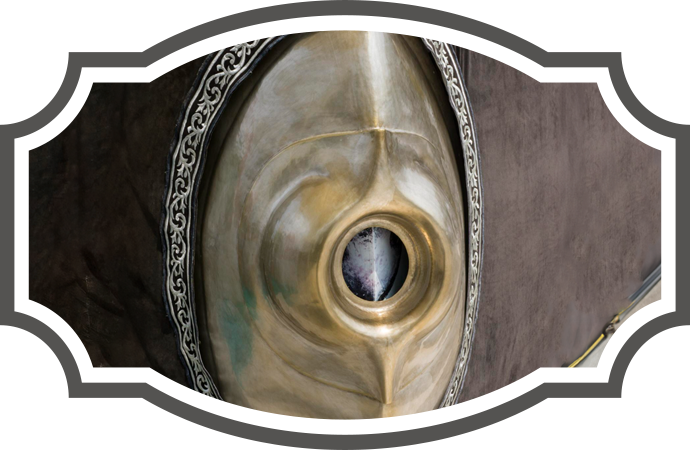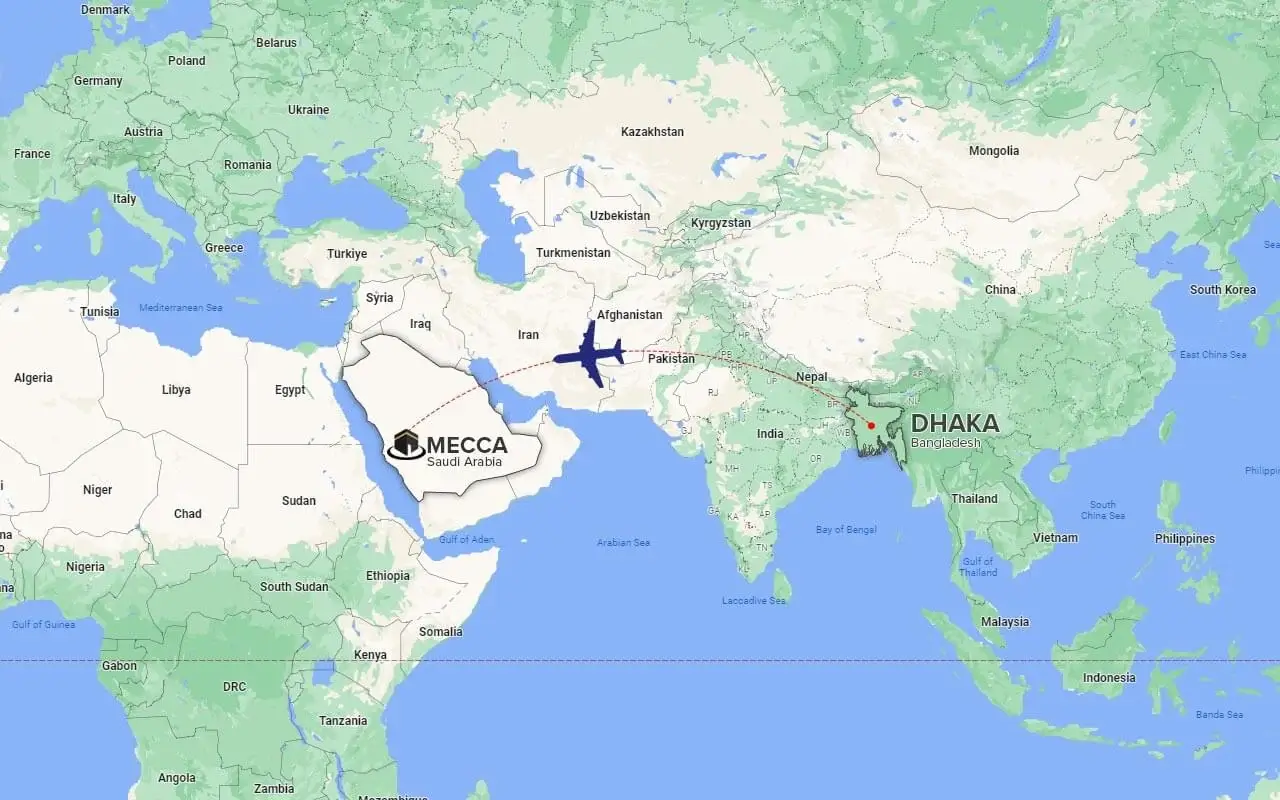History of the holy Kaba (Baitullah) in Makkah
Would you like to learn about the history of the holy Kaba (Baitullah) in Makkah? Certainly, you can discover it by reading this content. The Kaaba is the house of Almighty Allah, first reconstructed by the Prophet Adam (Alaihis Salam). However, it was buried under the sand during Nooh's (Alaihis Salam) flood.
After some time, Almighty Allah instructed the Prophet Ibrahim and his son Isma'il (Alaihis Salam) to reconstruct it. According to the Qur'an, it is considered the first house on earth. Following Masjid-ul-Aqsa, the Kaaba was declared as the Qiblah by Allah. To know the history of the Kaaba, please scroll down:
Building the Kaba
An important part of the history of the holy Kaba (Baitullah) in Makkah is building the Kaaba. In Islamic tradition, it is believed that the Kaaba, located in the center of the Masjid al-Haram in Makkah, was initially built by the angels and then reconstructed by Prophet Adam. The Kaaba is considered the holiest site in Islam, and Muslims around the world face its direction during their daily prayers.
According to Hadith, Allah instructed the angels to build the Kaaba. After its construction, the angels revolved around it. Later, when Prophet Adam was sent to Earth, Allah instructed him to perform the Hajj pilgrimage. It is believed that Prophet Adam, following Islamic guidance, reconstructed the Kaaba at the same location where the angels had built it.

Reconstruction of the holy Kaba
The origins of the Holy Kaaba follow back to the time of Prophet Ibrahim (Alaihis Salam) and his son Prophet Isma'il (Alaihis Salam). According to the Qur’an and Sunnah, under religious guidance, Ibrahim and Isma'il were chosen to reconstruct the Kaba on the original foundations. This act of dedication and obedience became a cornerstone in the history of the Kaaba, symbolizing the oneness of Allah.
The pre-islamic era
Long before the beginning of Islam, the Kaaba was already a central sanctuary for various Arab tribes. The structure housed numerous idols, and the annual pilgrimage, known as Hajj, attracted pilgrims from different regions. Despite the widespread worship, the Kaaba held onto its sacred status.

Islamic transformation
The turning point in the history of the Kaaba came with the beginning of Islam in the 7th century. Prophet Muhammad (Sallallahu Alaihi Wa Sallam) and his ummah ( followers), facing cruelty in Makkah, returned successfully to cleanse the Kaaba of its idols. This event, known as the Victory of Makkah, marked a spiritual restoration, returning the Kaaba to its original one-Allah-faith purpose.
The Hajar-e- Aswad (Black Stone)
A significant part of the history of the holy Kaba (Baitullah) in Makkah is Hajar-e-Asw (Black Stone). One of the most respectable elements of the Kaaba is the Hajar-e-Aswad (Black Stone), believed to have been given to Prophet Ibrahim by the angel Jibreel (Alaihis Salam). Housed in the eastern corner of the Kaaba, the Black Stone is kissed or touched by pilgrims during the Hajj as an integral part of the ritual.
Architectural transformation
Throughout history, the Kaaba has undergone several reconstructions and renovations. The current structure, a cubic building covered in a black silk and gold curtain known as the Kiswa, represents a witness to Islamic architecture and the enduring spirit of faith.
Hajj and Umrah
The annual pilgrimage of Hajj and the smaller pilgrimage of Umrah draw millions of Muslims to the Holy Kaaba. Pilgrims from diverse backgrounds came together, and donned simple white garments, emphasizing the equality and unity of the Muslim Ummah.
Ending
Hijaz Hajj Umrah Ltd. is a leading Hajj and Umrah travel agency in Bangladesh. It offers various Hajj and Umrah packages for pilgrims from Bangladesh, guiding them from the first to the last step of their pilgrimage. If you would like to perform Hajj and Umrah after learning about the history of the holy Kaaba (Baitullah) in Makkah, please contact this agency.
Hijaz Service Area
Find your nearby Hajj & Umrah agency associated with Hijaz Hajj Umrah Ltd. Bangladesh. Identify the trusted Umrah agents in your area and get in touch with them to facilitate your next holy journey to Makkah and Madina.
- Bagerhat
- Bandarban
- Barguna
- Barisal
- Bhola
- Bogra
- Brahmanbaria
- Chandpur
- Chittagong
- Chuadanga
- Cox's Bazar
- Cumilla
- Dhaka
- Dinajpur
- Faridpur
- Feni
- Gaibandha
- Gazipur
- Gopalganj
- Habiganj
- Jamalpur
- Jessore
- Jhalokati
- Jhenaidah
- Joypurhat
- Khagrachari
- Khulna
- Kishoreganj
- Kurigram
- Kushtia
- Lakshmipur
- Lalmonirhat
- Madaripur
- Magura
- Manikganj
- Maulvibazar
- Meherpur
- Munshiganj
- Mymensingh
- Naogaon
- Narail
- Narayanganj
- Narsingdi
- Natore
- Nawabganj
- Netrokona
- Nilphamari
- Noakhali
- Pabna
- Panchagarh
- Patuakhali
- Pirojpur
- Rajbari
- Rajshahi
- Rangamati
- Rangpur
- Satkhira
- Savar
- Shariatpur
- Sherpur
- Sirajgonj
- Sunamganj
- Sylhet
- Tangail
- Thakurgaon

